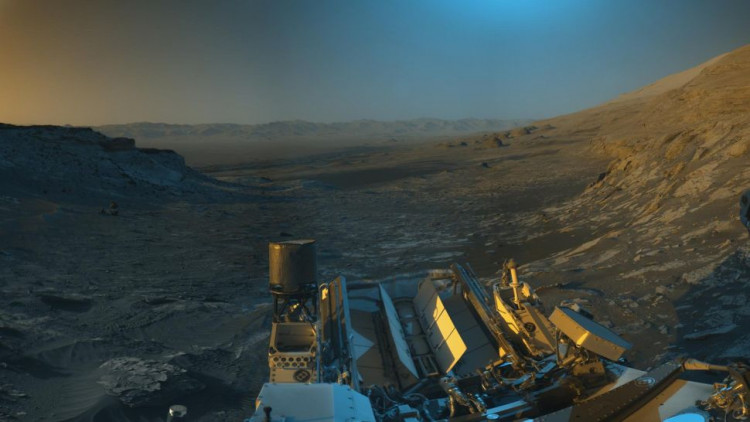NASA's Curiosity Mars rover collected Martian rock samples that show signs of key ingredients for life as we know it on Earth.
For the first time, scientists are using data from NASA's Curiosity rover to calculate the total organic carbon in Martian rocks. Organic carbon is an important component of life molecules. There is evidence that the climate of Mars was similar to that of Earth billions of years ago, with a thicker atmosphere and liquid water flowing into rivers and seas.
Since liquid water is required for life as we know it today, scientists believe that Martian life, if it ever existed, could have been sustained by key ingredients such as organic carbon, if present in sufficient amounts. Organic carbon is carbon that has been joined to a hydrogen atom. It is the building block of organic molecules, which are produced and utilized by all known forms of life.
Curiosity Rover drilled samples from Gale crater, the location of an ancient lake on Mars. According to NASA, scientists were able to measure the total amount of organic carbon in Martian rocks for the first time using these samples.
Organic carbon, which is carbon bound to a hydrogen atom, is required for all known forms of life to create and use organic molecules. Organic carbon, on the other hand, can come from non-living sources such as meteorites and volcanic eruptions. While previous studies found organic carbon in lower concentrations in Martian rock samples, the new measurements shed light on the total amount of carbon in organic compounds.
"Total organic carbon is one of several measurements [or indices] that help us understand how much material is available as feedstock for prebiotic chemistry and potentially biology," according to Jennifer Stern, lead author of the study and a space scientist at NASA's Goddard Space Flight Center in Greenbelt, Maryland.
"We found at least 200 to 273 parts per million of organic carbon. This is comparable to or even more than the amount found in rocks in very low-life places on Earth, such as parts of the Atacama Desert in South America, and more than has been detected in Mars meteorites."
Mars is not a suitable environment for life today, but there is evidence that it was more Earth-like billions of years ago, with a thicker atmosphere and liquid water on its surface - both of which are required for life as we know it on Earth.





